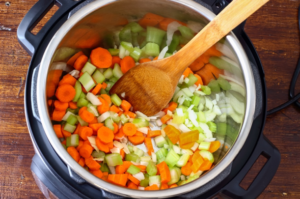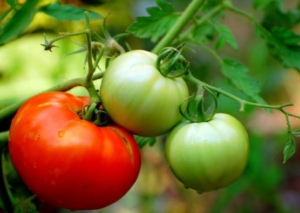Home Insteading With Cooperative Extension (Week 9)
go.ncsu.edu/readext?693335
en Español / em Português
El inglés es el idioma de control de esta página. En la medida en que haya algún conflicto entre la traducción al inglés y la traducción, el inglés prevalece.
Al hacer clic en el enlace de traducción se activa un servicio de traducción gratuito para convertir la página al español. Al igual que con cualquier traducción por Internet, la conversión no es sensible al contexto y puede que no traduzca el texto en su significado original. NC State Extension no garantiza la exactitud del texto traducido. Por favor, tenga en cuenta que algunas aplicaciones y/o servicios pueden no funcionar como se espera cuando se traducen.
Português
Inglês é o idioma de controle desta página. Na medida que haja algum conflito entre o texto original em Inglês e a tradução, o Inglês prevalece.
Ao clicar no link de tradução, um serviço gratuito de tradução será ativado para converter a página para o Português. Como em qualquer tradução pela internet, a conversão não é sensivel ao contexto e pode não ocorrer a tradução para o significado orginal. O serviço de Extensão da Carolina do Norte (NC State Extension) não garante a exatidão do texto traduzido. Por favor, observe que algumas funções ou serviços podem não funcionar como esperado após a tradução.
English
English is the controlling language of this page. To the extent there is any conflict between the English text and the translation, English controls.
Clicking on the translation link activates a free translation service to convert the page to Spanish. As with any Internet translation, the conversion is not context-sensitive and may not translate the text to its original meaning. NC State Extension does not guarantee the accuracy of the translated text. Please note that some applications and/or services may not function as expected when translated.
Collapse ▲4-H At Home
Camaryn Byrum, 4-H Agent
Family Yoga Session
Hold a family yoga session to release stress, work on your flexibility, and focus on breathing.
Supplies:
Yoga mat (if available)
Directions:
- Gather your family members into a large room.
- If available, each person can use a yoga mat.
- Visit: 4-H -Yoga. Watch the video to practice yoga poses like mountain, tree, warrior II, seated twist, downward-facing dog.
Reflection:
- Which yoga pose was your favorite?
- Were you able to do all of the different poses?
- Were any of the poses too hard?
- After doing the yoga session, do you feel more relaxed and less stressed?
Family and Consumer Sciences At Home
Mary Morris, County Extension Director and Family and Consumer Sciences Agent
To Electric Pressure Cook? Or Not?
If you are one of the millions of people who have started using an Electric Pressure Cooker like the Instant Pot or Ninja Foodie you are already enjoying more free time right before dinner. I have one and absolutely LOVE mine. If you have not purchased one or are just nervous about the whole pressure-cooking appliance maybe I can help ease your mind.
The Electric Pressure Cooker is a great addition to your kitchen arsenal. This one device can cut down on your meal prep by hours, yes that’s right hours. The beauty of this appliance is that it does use pressure so the temperature inside gets much hotter than a slow cooker, which allows food to cook faster and even cook from frozen in less than an hour. This appliance is a multicooker you can pressure cook food, sauté, slow cook, and even rice cooker. You can make your own yogurt and hard boil eggs. This appliance is a working parents’ dream, no more fretting over forgetting to thaw something out to make for dinner.
I will admit when you first pull it out of the box it looks intimidating. I had to really use this appliance to learn how to operate all of the functions. One really nice thing about the Electric Pressure Cooker is that it is safe, it has a built-in safety shut off that prevent any exploding from happening. You can prepare your one pot meal set the timer and walk away. Your recipes will be done in about 30 min and taste like you have been cooking them all day.
To help learn about your Electric Pressure Cooker I will be offering a live Zoom session on May 27, 2020, at noon. We will look at the electric pressure cooker and walk through all of the functions. Please call Mary Morris 252-482-6585 or email: mary_morris@ncsu.edu for questions. This class is free. Please visit our county website to register and get the Zoom link. Here is a recipe to try in the meantime.
Instant Pot Stuffed Peppers
Serves 4 (serving size: 1 stuffed pepper)
Ingredients
- 4 large multicolored bell peppers, tops cut off and chopped, peppers hollowed and seeded 1 pound 93% lean ground turkey
- 3/4 cup cooked brown rice
- 1/3 cup seasoned breadcrumbs
- 3/4 cup reduced-sodium marinara sauce, divided 1/4 cup minced onion
- 1-ounce grated Parmesan cheese (about 1/4 cup) 3 tablespoons chopped parsley
- 2 teaspoons tomato paste
- 1/4 teaspoon kosher salt
- Black pepper to taste
- 1 large egg, beaten
- 1 garlic clove, minced
- 1/2 cup water
- 1-ounce shredded mozzarella cheese (about 1/4 cup)
Directions
Step 1
Combine chopped pepper tops with ground turkey, cooked brown rice, breadcrumbs, 1/4 cup marinara sauce, onion, Parmesan cheese, parsley, tomato paste, salt, black pepper, egg, and garlic. Mix thoroughly.
Step 2
Stuff about 1 cup ground turkey mixture into each pepper. Pour 1/2 cup water into bottom of Instant Pot. Place a rack in the pot; stand stuffed peppers upright on the rack. Cover each pepper top with 2 tablespoons marinara sauce. Cover and cook on high pressure 15 minutes; natural release. Open the lid, top with mozzarella cheese, and cover until cheese melts, about 2 minutes.
You can also make this recipe in a covered casserole dish instead. Preheat the oven to 350°F, make the peppers as instructed, then place in casserole dish with 1/2 to 1 cup water (depending on size of dish). Cover and bake until cooked through, about 45 to 50 minutes.
- Calories 399, ●Fat 16g, ●Satfat 5g, ●Unsat 10g, ●Protein 35g, ●Carbohydrates 31g, ●Fiber 6g, ●Sugars 10g, ●Added sugars 0g, ●Sodium 648mg, ●Calcium 25% DV, ●Potassium 14% DV.
Recipe by Gina Homolka.
Horticulture At Home
Katy Shook, Area Horticulture Agent
Tomato Tips
Most tomatoes have been in the ground for several weeks now, and gardeners are anxiously awaiting the first fruit. However, it’s also at this stage that pests begin appearing and can ruin a crop before it’s even had a chance to mature. There are several guidelines gardeners can follow to ensure a bountiful crop, and reduce the chance of insects and disease.
Although today’s market is filled with a variety of tomatoes, like Better Boy, it is best to experiment with what works well in your garden. If this year’s plants are already in the ground, make a note of what variety was planted and consider trying a different variety next year. Tomato varieties vary in taste and performance. Staking is necessary for most tomato plants, and should be installed now before the plants get too large. Support options include cages, or stakes and ties.
After the tomatoes have started to set fruit, apply 2 to 3 Tbsp. of a complete fertilizer to each plant. Be sure to keep the fertilizer at least 4 inches away from the main stem to prevent burn. Consistent watering is also necessary. Adding mulch like wheat straw or leaf compost to the top of the soil will help conserve moisture. Inconsistent moisture can cause problems. The same is true for temperature. Whenever there are extreme changes in these factors, diseases are more likely to appear. Common tomato diseases include various wilts and rots like Blossom-end Rot. Blossom-end Rot affects the fruit, causing a rotted area at the base of the fruit, while other diseases cause blackening and wilting of the stems and leaves. Keeping on top of fertilizer and moisture requirements will help reduce the chance of pests and produce a better fruit.
Other practices that help reduce pests include proper sanitation methods. Remove and destroy any infected plants from the garden, and control nearby weeds that act as hosts to insects and disease. Weeds can be hand pulled, mechanically removed with a tool, or chemically controlled following labeled product instructions. Practice crop rotation by planting tomatoes in a different area of the garden each year. Don’t plant related crops like eggplant and pepper nearby. Chemical control of most diseases is not practical after the plant has been infected.
For more information on tomatoes and other garden vegetables, call (252) 482-6585 or email katy_shook@ncsu.edu.





